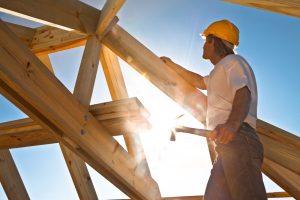 Dodge Data and Analytics has released its latest data on construction starts, showcasing stats for the month of January 2018. Among the noteworthy data points: a spike-in single-family housing starts in the Northeast region, even as the rest of the country saw either a decrease or held steady month-over-month.
Dodge Data and Analytics has released its latest data on construction starts, showcasing stats for the month of January 2018. Among the noteworthy data points: a spike-in single-family housing starts in the Northeast region, even as the rest of the country saw either a decrease or held steady month-over-month.
The total value of new construction starts in January 2018 decreased 2 percent to a seasonally adjusted annual rate of $725.9 billion, according to Dodge’s data. This follows a 13 percent hike in December. On an unadjusted basis, total construction starts in January amounted to $52.2 billion, down 7 percent year-over-year. On a 12-month moving total basis, total construction starts in the 12 months ending January 2018 were up 2 percent from the 12 months ending January 2017.
Residential building as a whole climbed 7 percent in January, assisted by an uptick in multifamily housing starts after three straight months of declines.
Single-family housing in January declined 3 percent, “settling back after the modest gains reported during the previous five months.” During January, single-family housing was down 11 percent in the West, down 2 percent in the South Central region, down 1 percent in the South Atlantic, and unchanged in the Midwest. However, the Northeast saw a 9 percent increase in residential building. This could bode well for investors looking for single-family rental opportunities in the Northeastern United States, as well as for inventory shortages in the region.
Residential building rose 1 percent year-over-year, with single-family housing up 3 percent while multifamily housing slipped 2 percent. The Northeast was down 36 percent year-over-year with regard to total construction starts. The West was down 10 percent, the South Central region slipped 9 percent, the South Atlantic held steady, and the Midwest climbed by 42 percent.
"Although the expansion for the construction industry lost some momentum during 2017, on a broad level it can be characterized as deceleration as opposed to decline," said Robert A. Murray, Chief Economist for Dodge Data & Analytics. "January's level of activity, which held close to last year's mid-range, is consistent with the picture of a decelerating expansion. The factors affecting construction activity going forward in 2018 have become more varied. Some dampening may come from higher material prices and tight labor markets, yet while interest rates are rising the increases are expected to stay moderate this year."

 DSNews The homepage of the servicing industry
DSNews The homepage of the servicing industry










